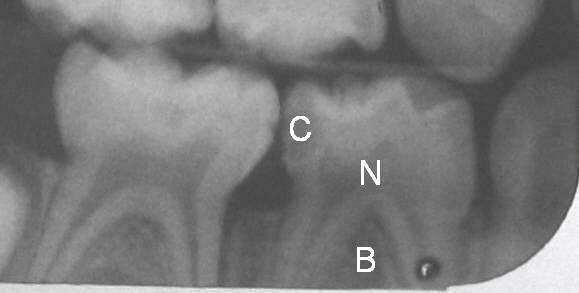 |
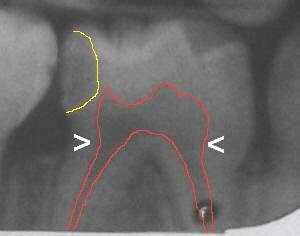 |
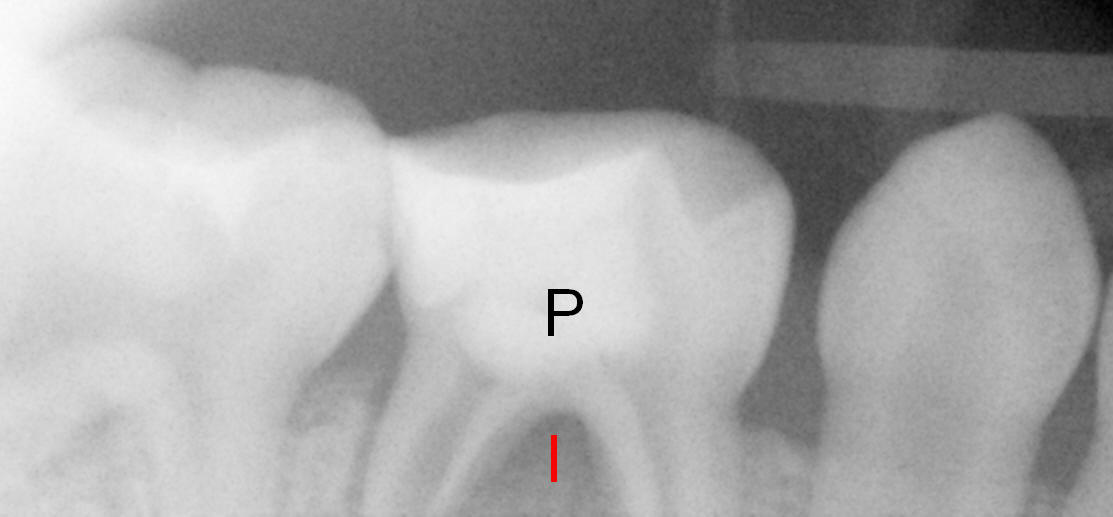 |
|
Fig.1 |
Fig.2 |
Fig.3 |
|
|
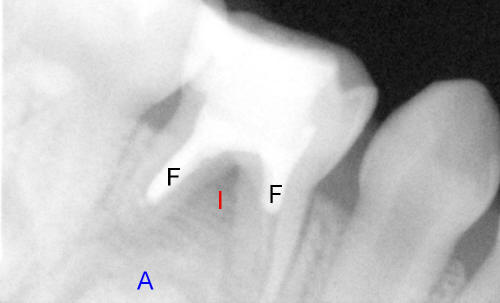 |
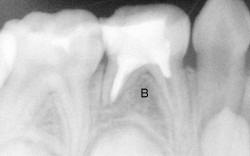 |
|
Fig.4 |
Fig.5 |
Fig.6 |
|
|
|
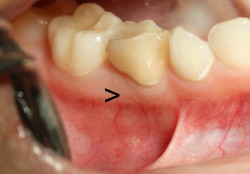 |
| Fig.7 | Fig.8 | Fig.9 |
 |
 |
 |
|
Fig.1 |
Fig.2 |
Fig.3 |
|
|
 |
 |
|
Fig.4 |
Fig.5 |
Fig.6 |
|
|
|
 |
| Fig.7 | Fig.8 | Fig.9 |
Dental Education Lecture: Baby Tooth Root Canal
Earlier, we talk about baby tooth nerve treatment. When cavity invades the nerve in early stage, part of the nerve should be removed. If this does not work, we have two options: 1. remove the remaining nerve, i.e, baby tooth root canal, and 2. take the tooth out and place a spacer.
Let us use a case to show you the difference between baby tooth nerve treatment (pulpotomy) and root canal. Tim is 4 years 8 months old when he first visits our office. One of the baby teeth has a big cavity (C in Fig.1), which is pretty close to nerve (N). The tooth has two roots. Between the latter is bone (B). In Fig.2, the outlines of cavity and nerve are drawn in yellow and red, respectively. Two arrowheads point the transition of the nerve inside the tooth and roots. If nerve infection is limited within inside the tooth, we just need to take out nerve above the arrowheads. Otherwise we should remove all of the nerve, above and below the arrowheads.
Initially we think that Tim's infection is not severe and choose to remove the nerve above the arrowheads and place a filling as shown a white area (P, pulpotomy, Fig.3). Two months later, he develops an abscess as shown in Fig.7. X-ray demonstrates that infection (I, Fig.3) extends between the roots, since the bone density is less than before (as compared to B in Fig.1). The infection may affect (arrow in Fig.4) a developing adult (A) tooth underneath.
So we ought to do more treatment (baby tooth root canal) by removing the nerve inside the roots. After cleaning, a special filling (F in Fig.5) is placed inside the roots. Three days later, the abscess decreases a lot without any pain (Fig.8, as compared to Fig.7). One year later, the abscess disappears completely (arrowhead in Fig.9, as compared to Fig.7,8). Tim is totally pain free. The density of bone between the roots (B in Fig.6) increases, suggesting bone healing, as compared to the density of bone (I in Fig.3-5) before baby tooth root canal.
Xin Wei, DDS, PhD, MS 1st edition 01/19/2010, last revision 11/02/2010